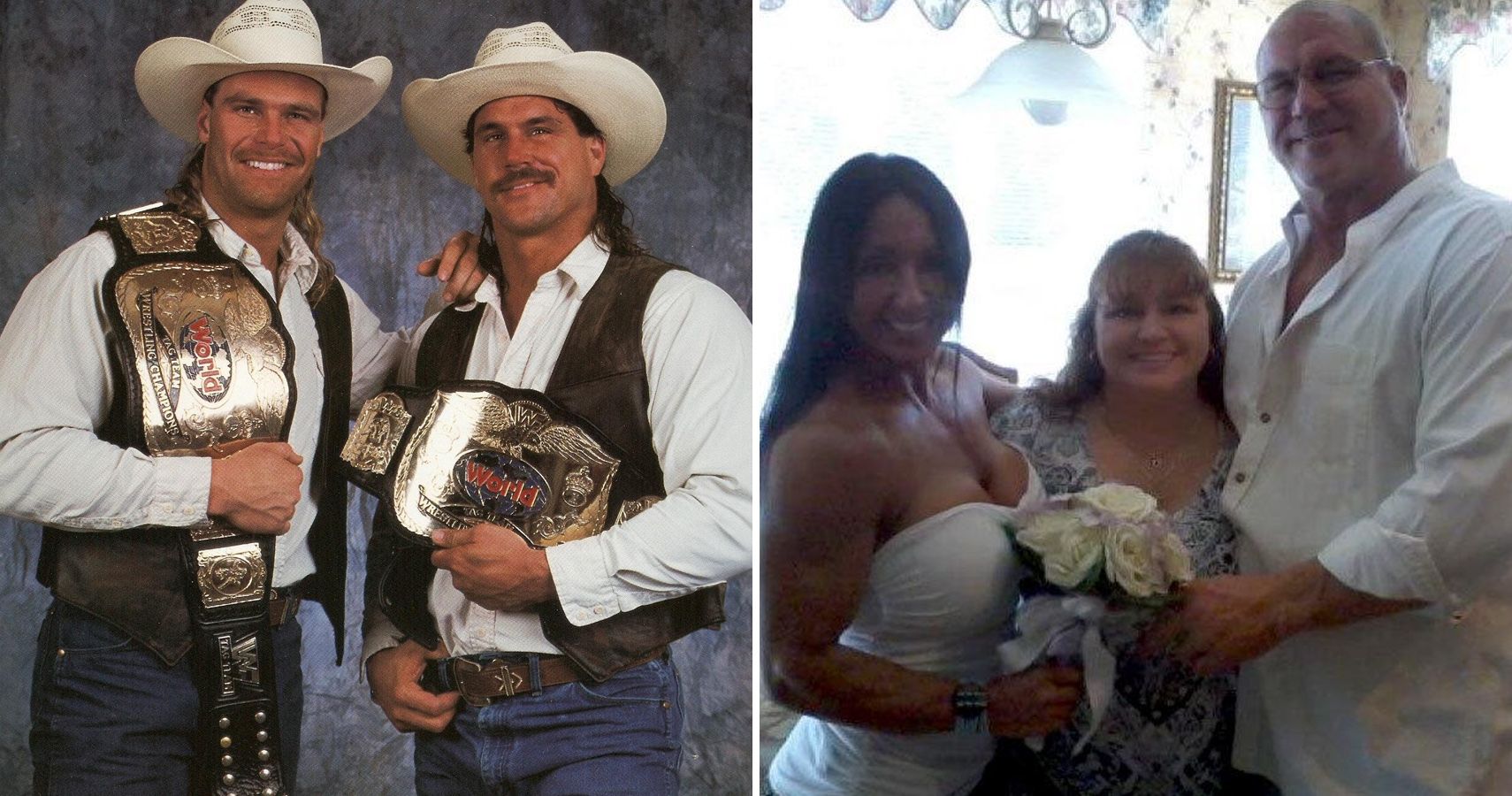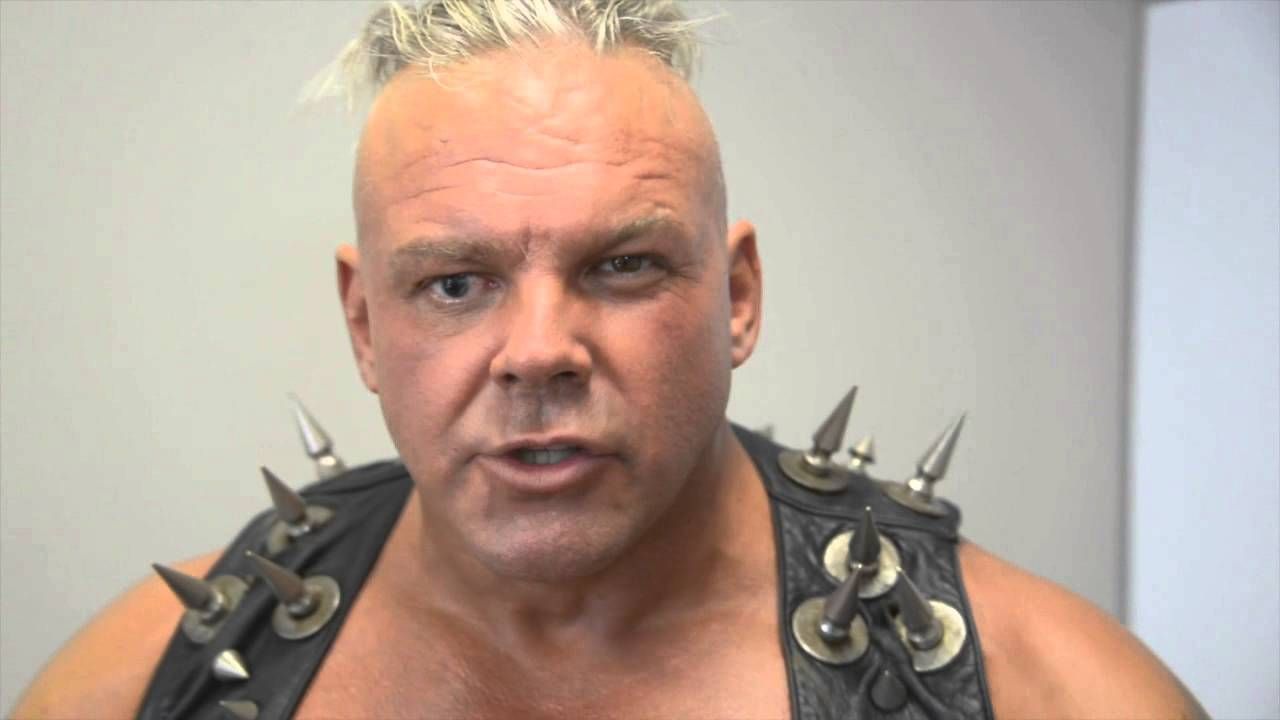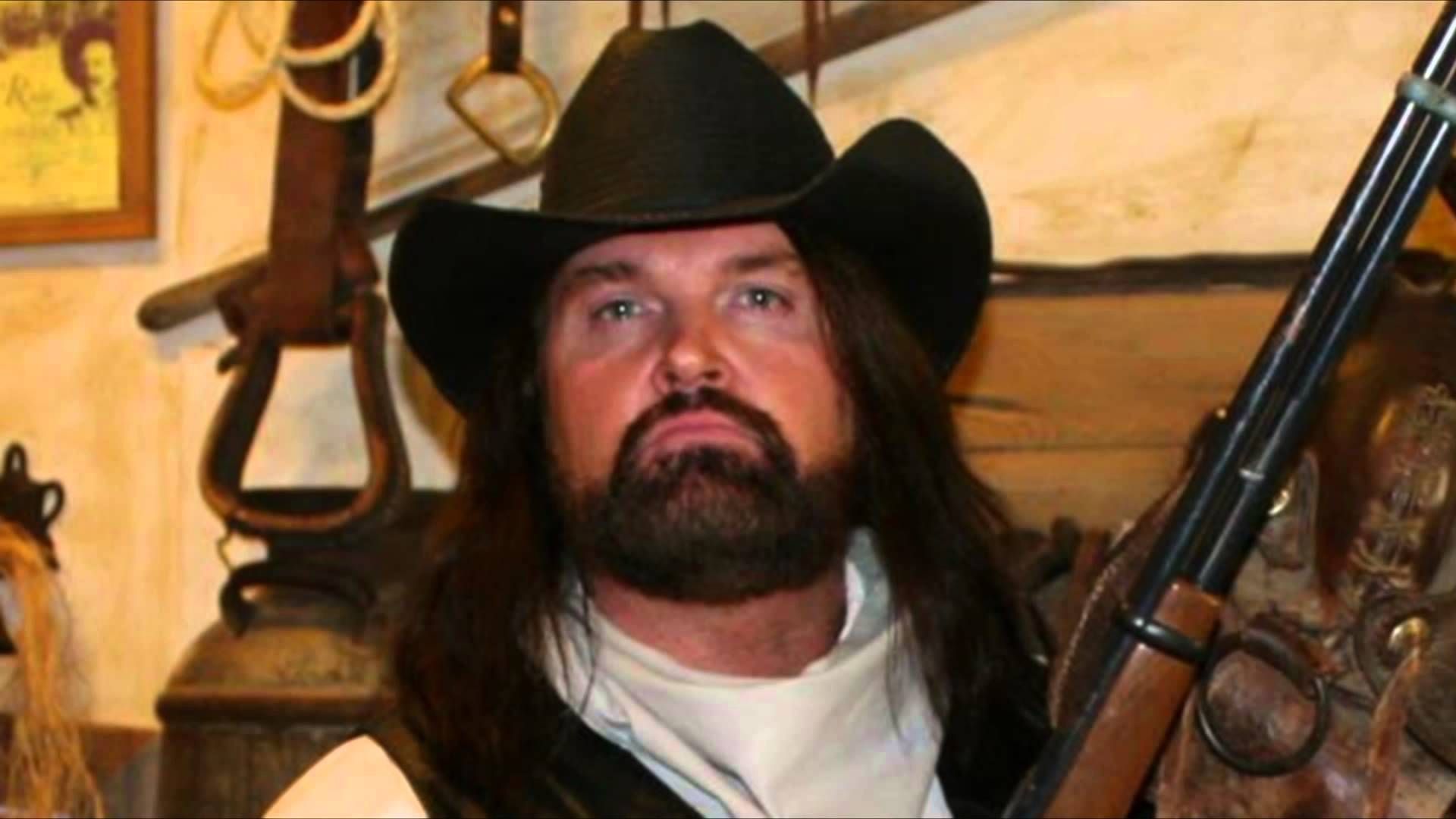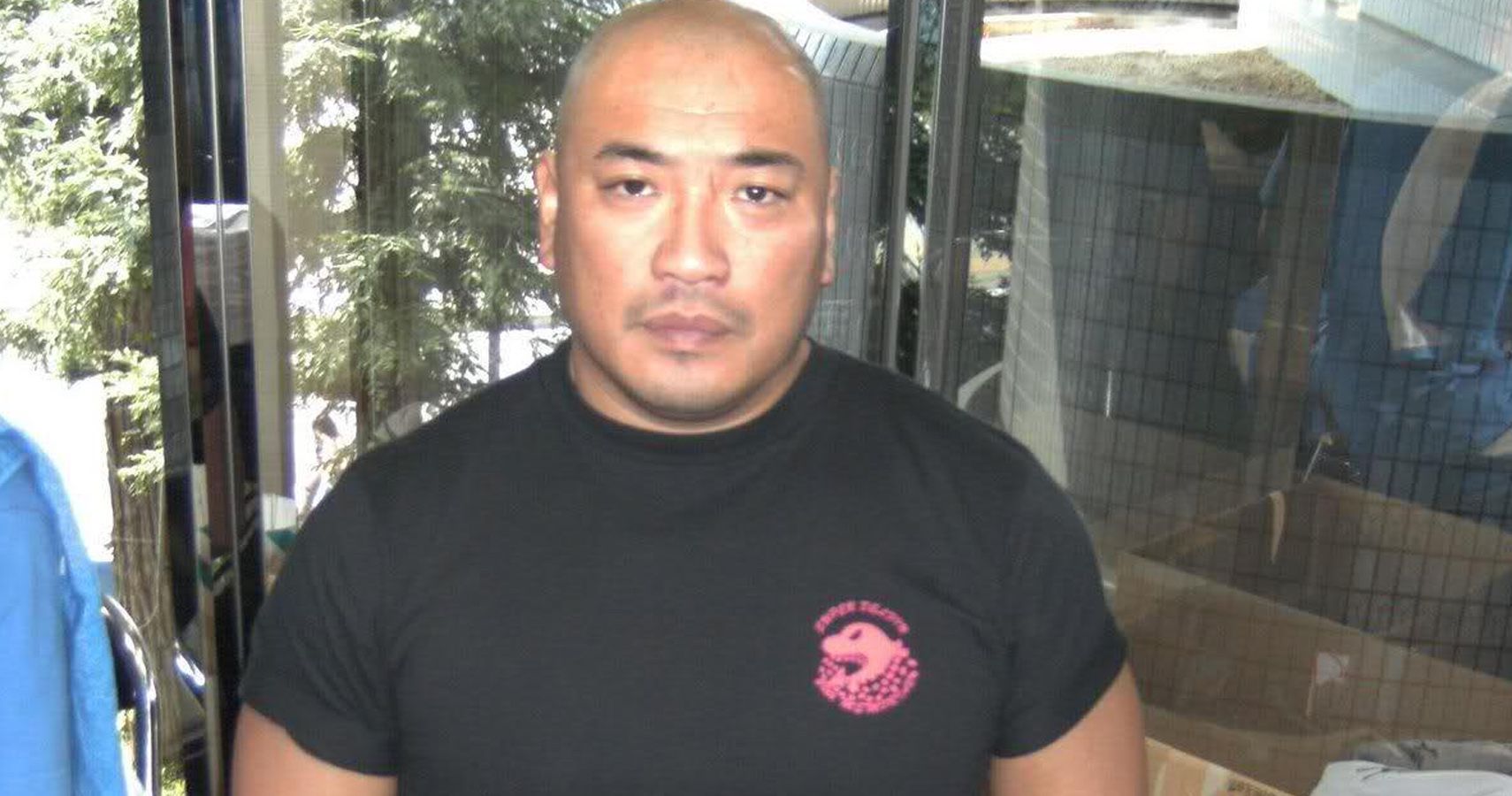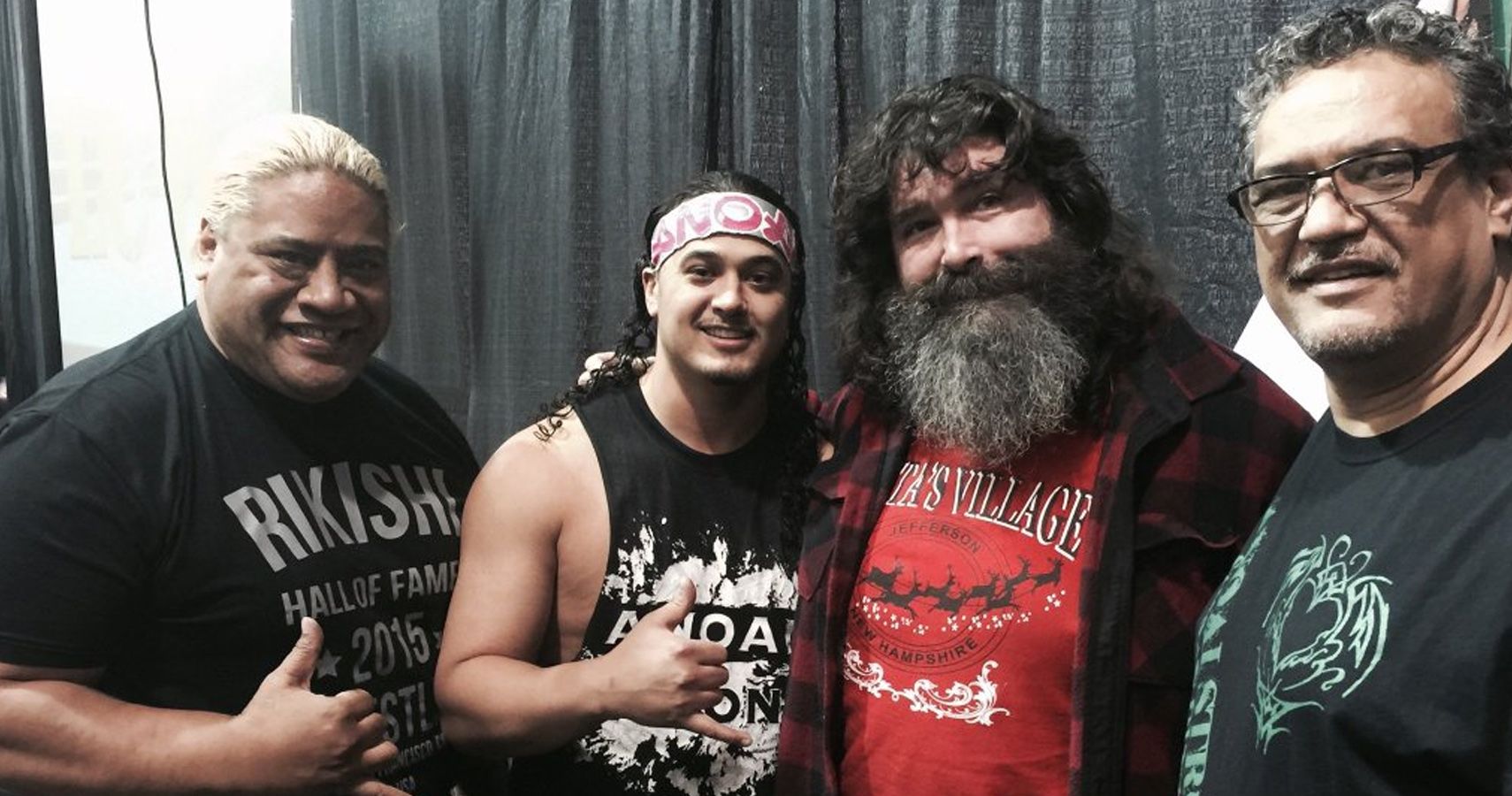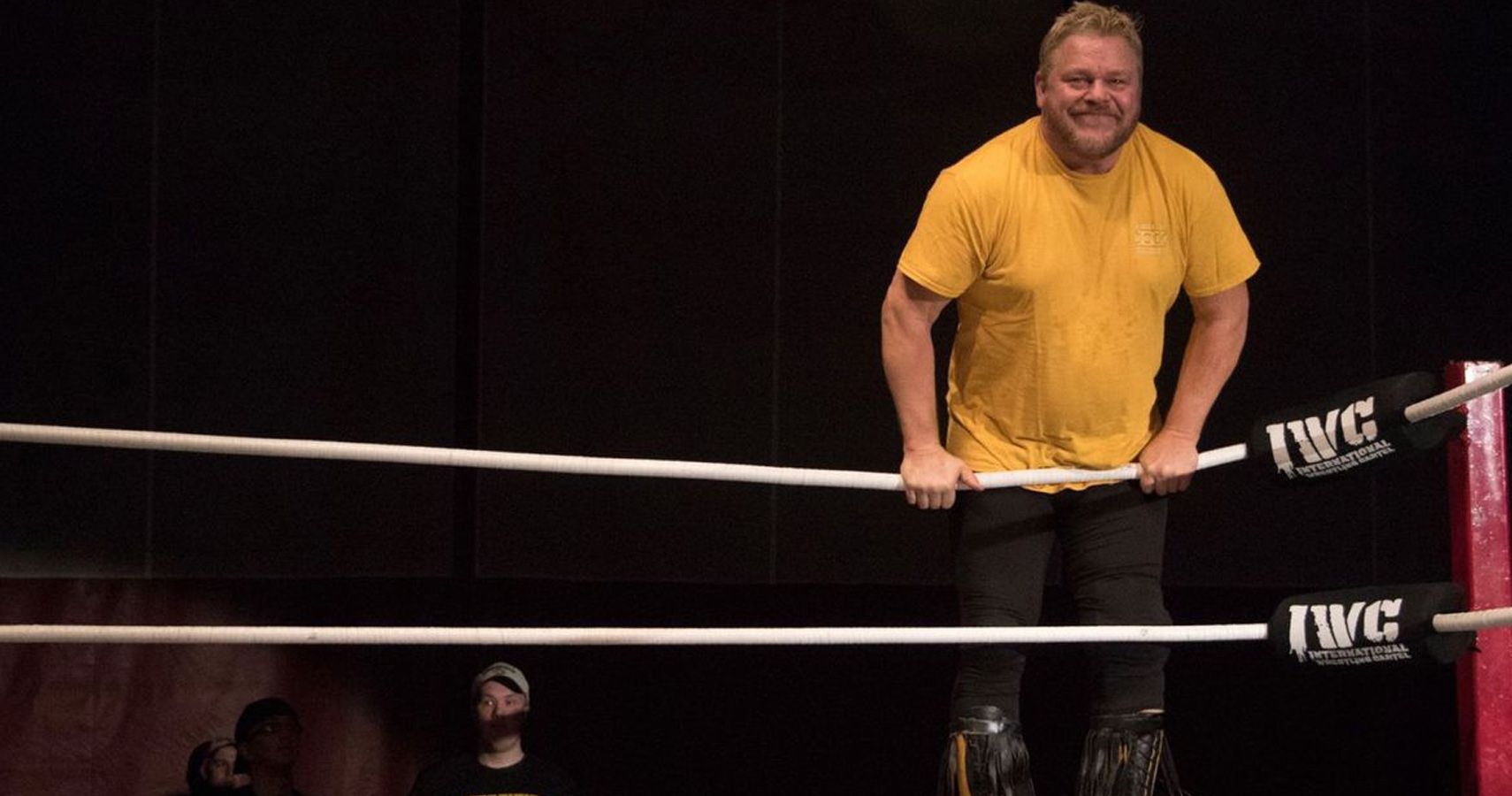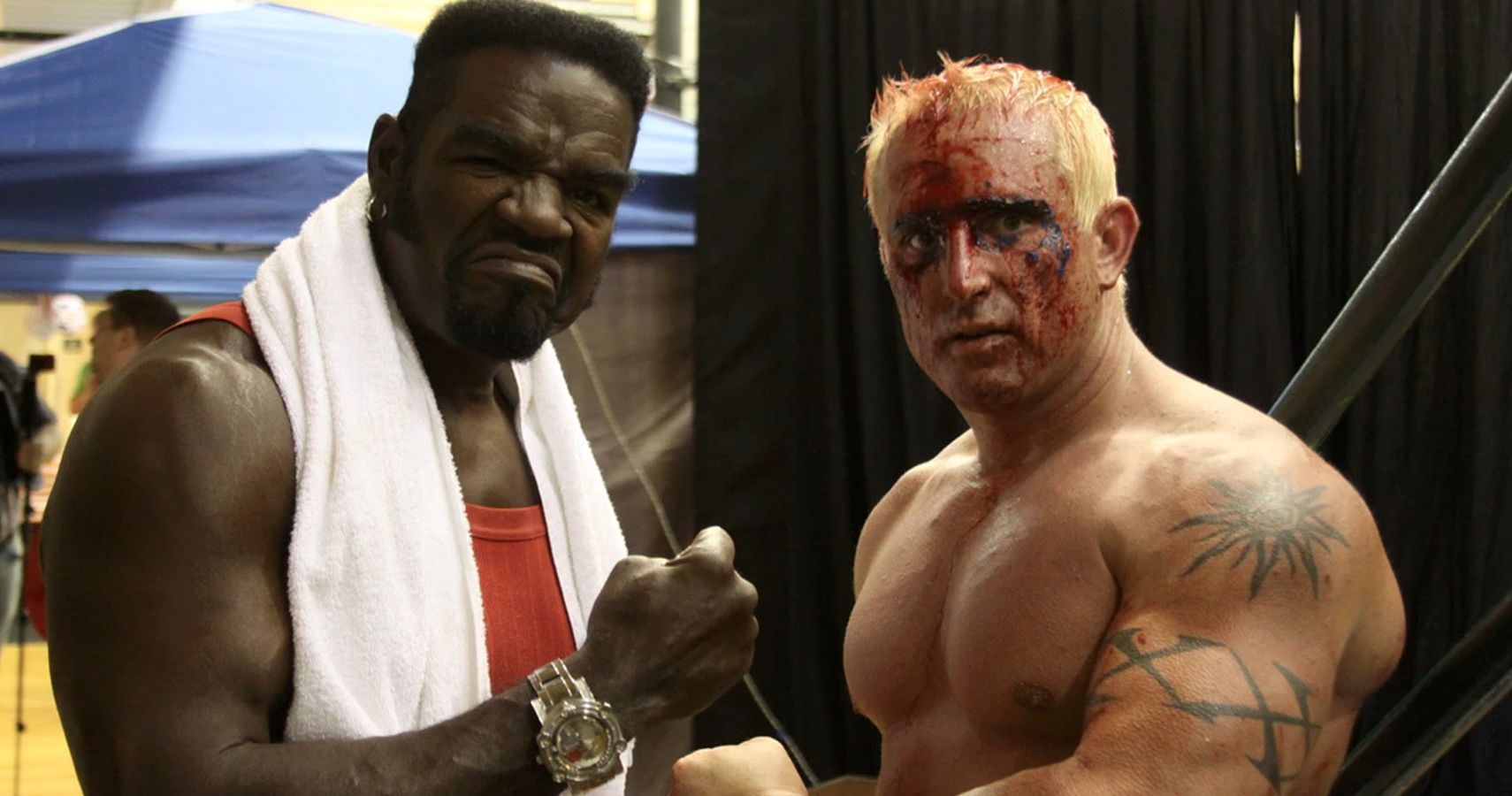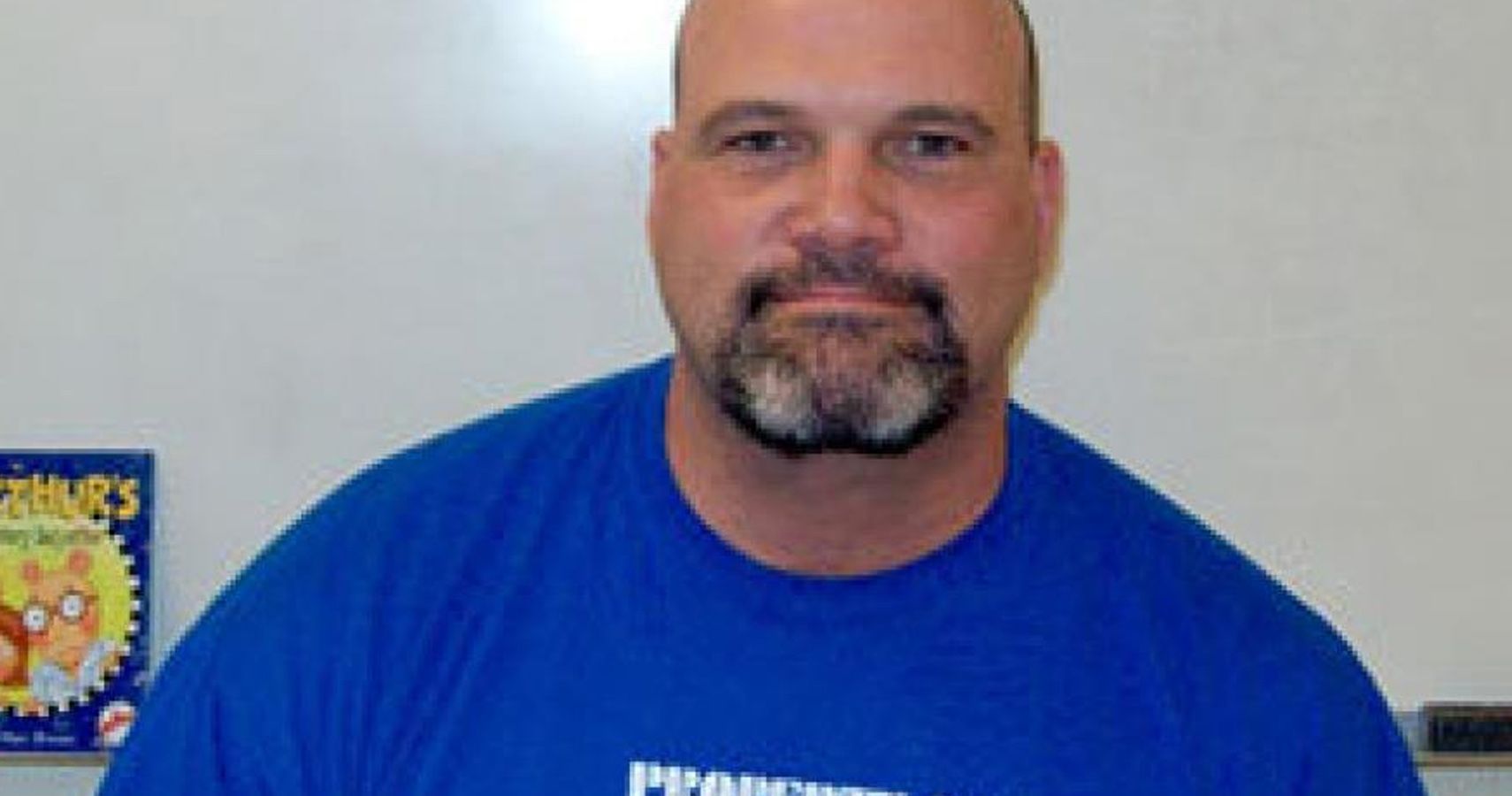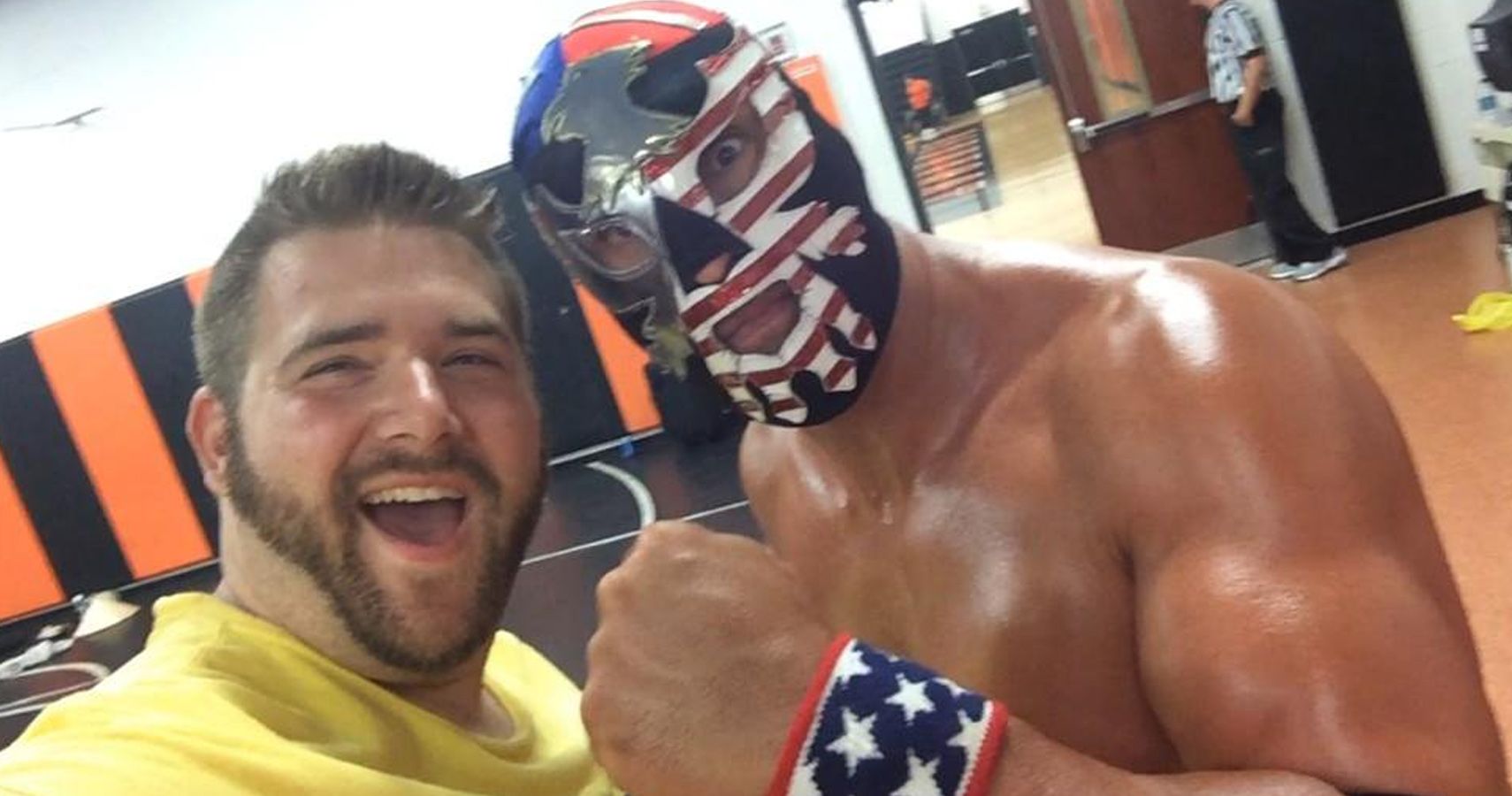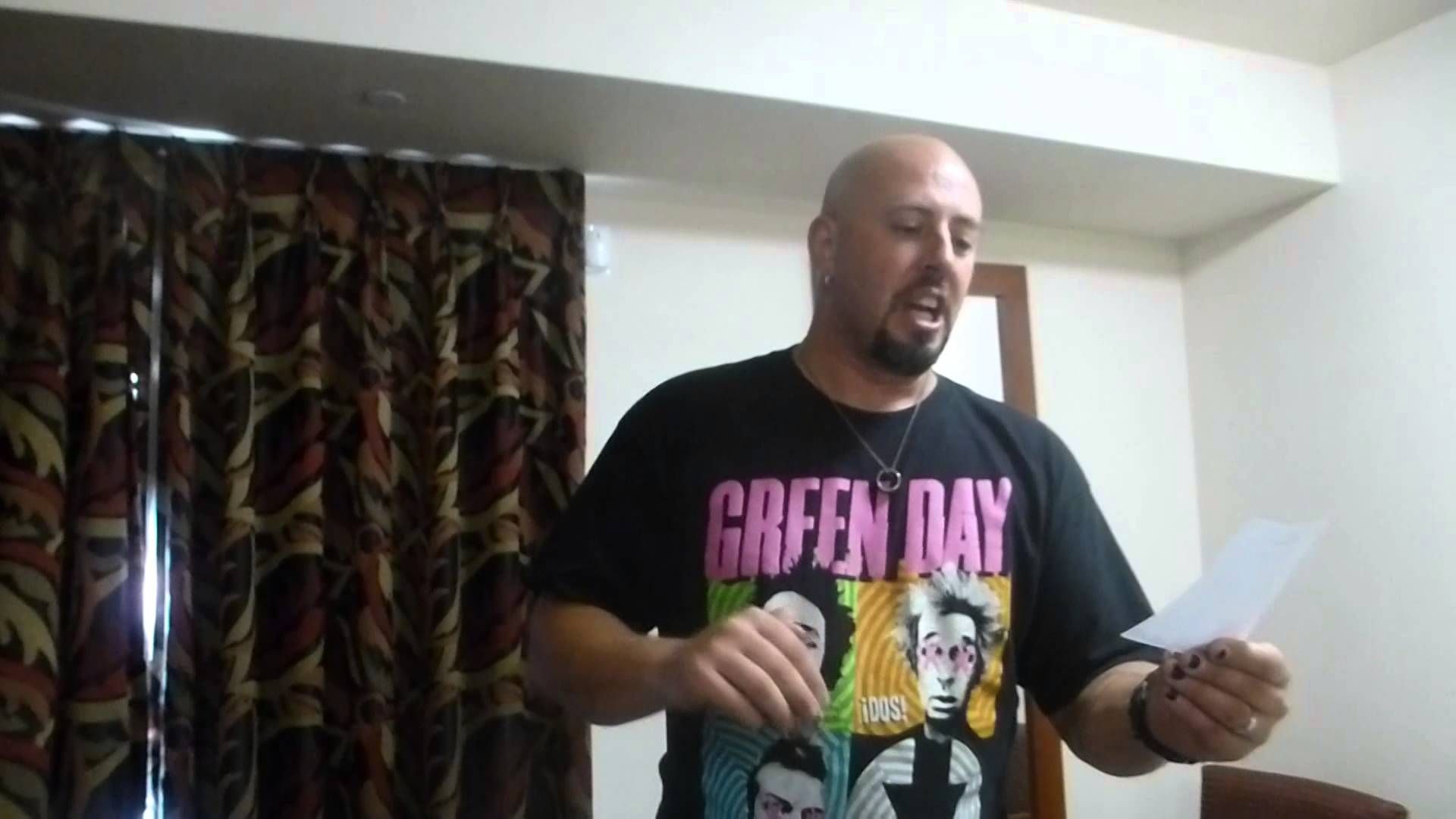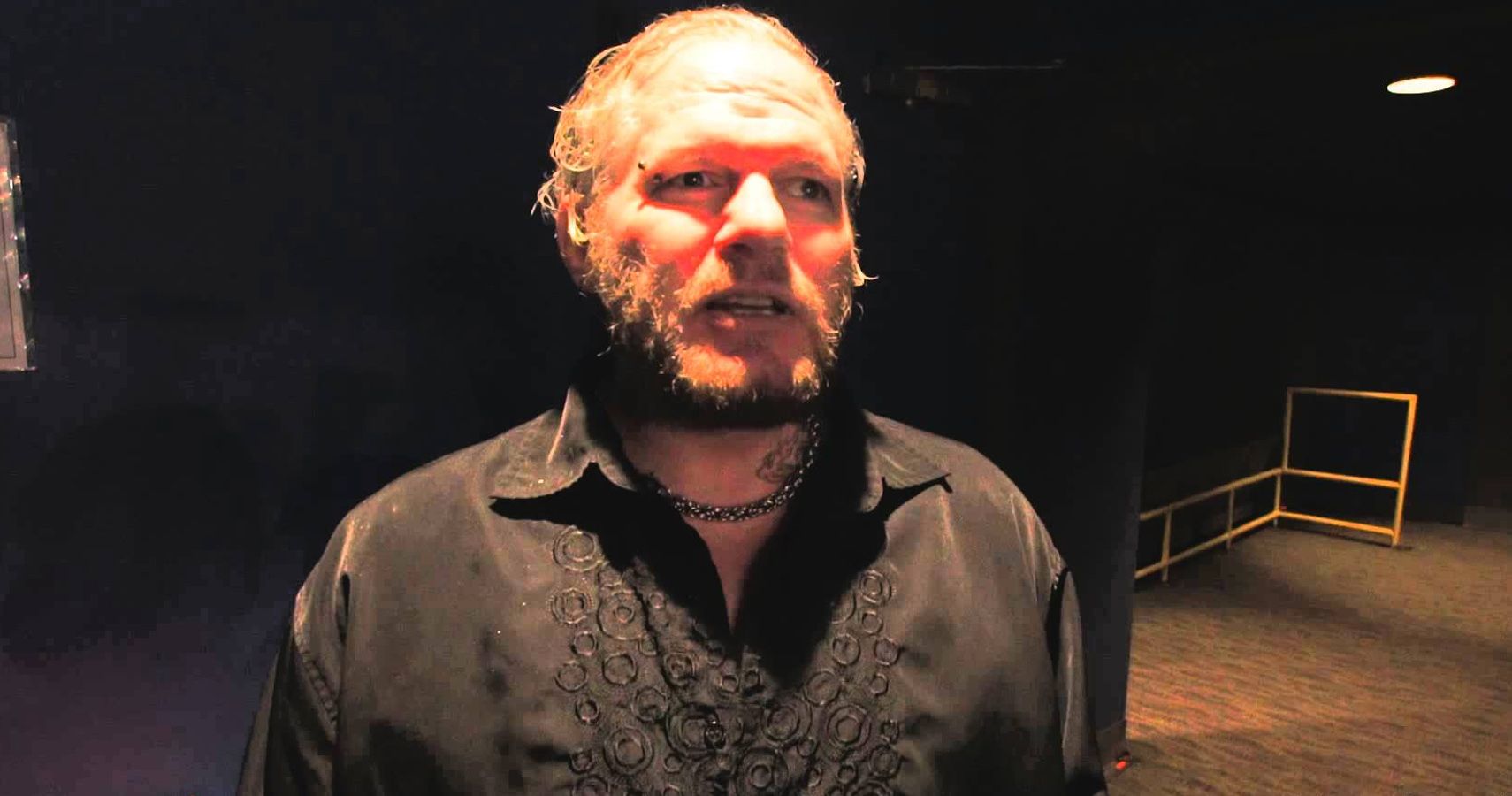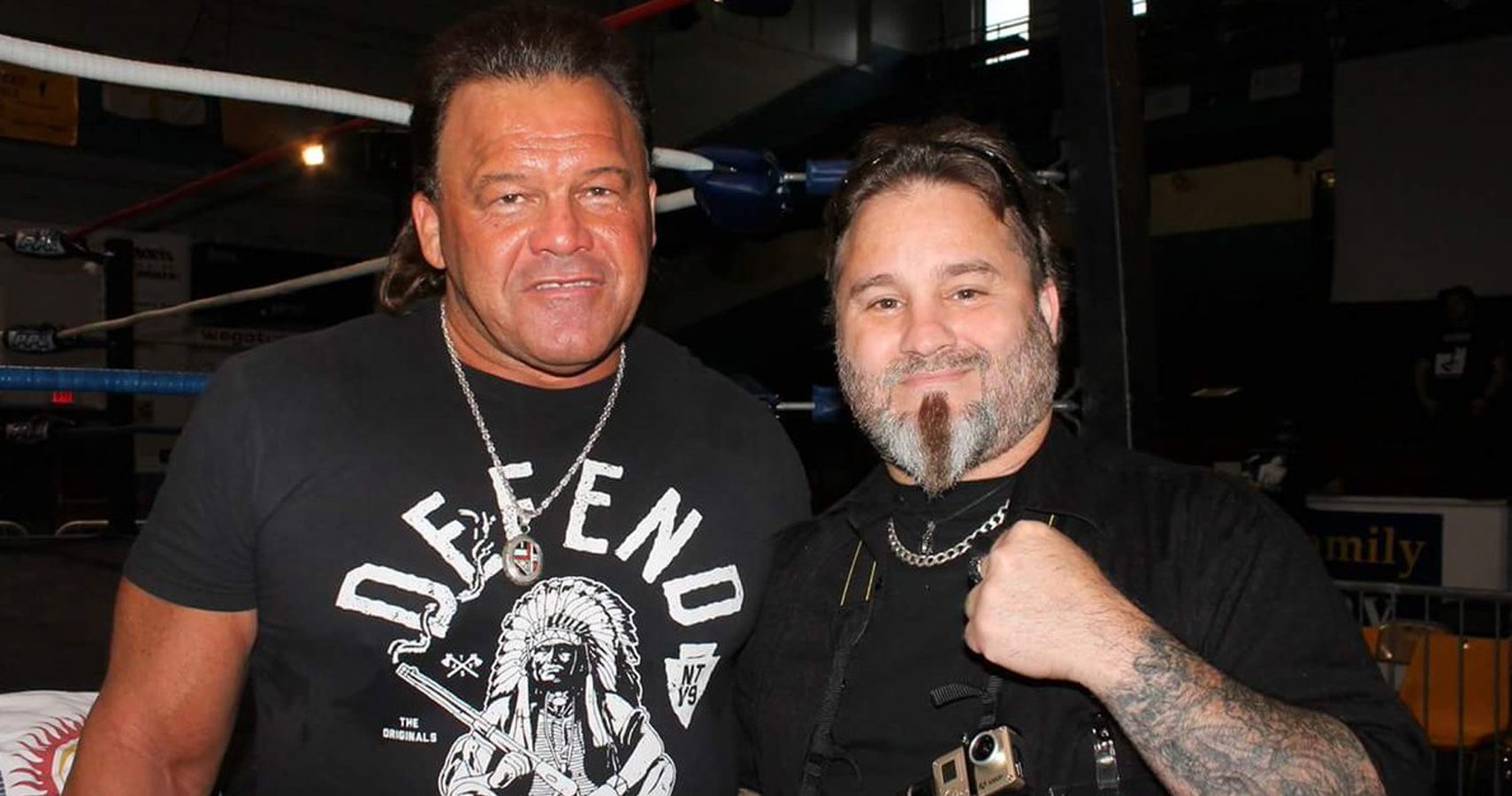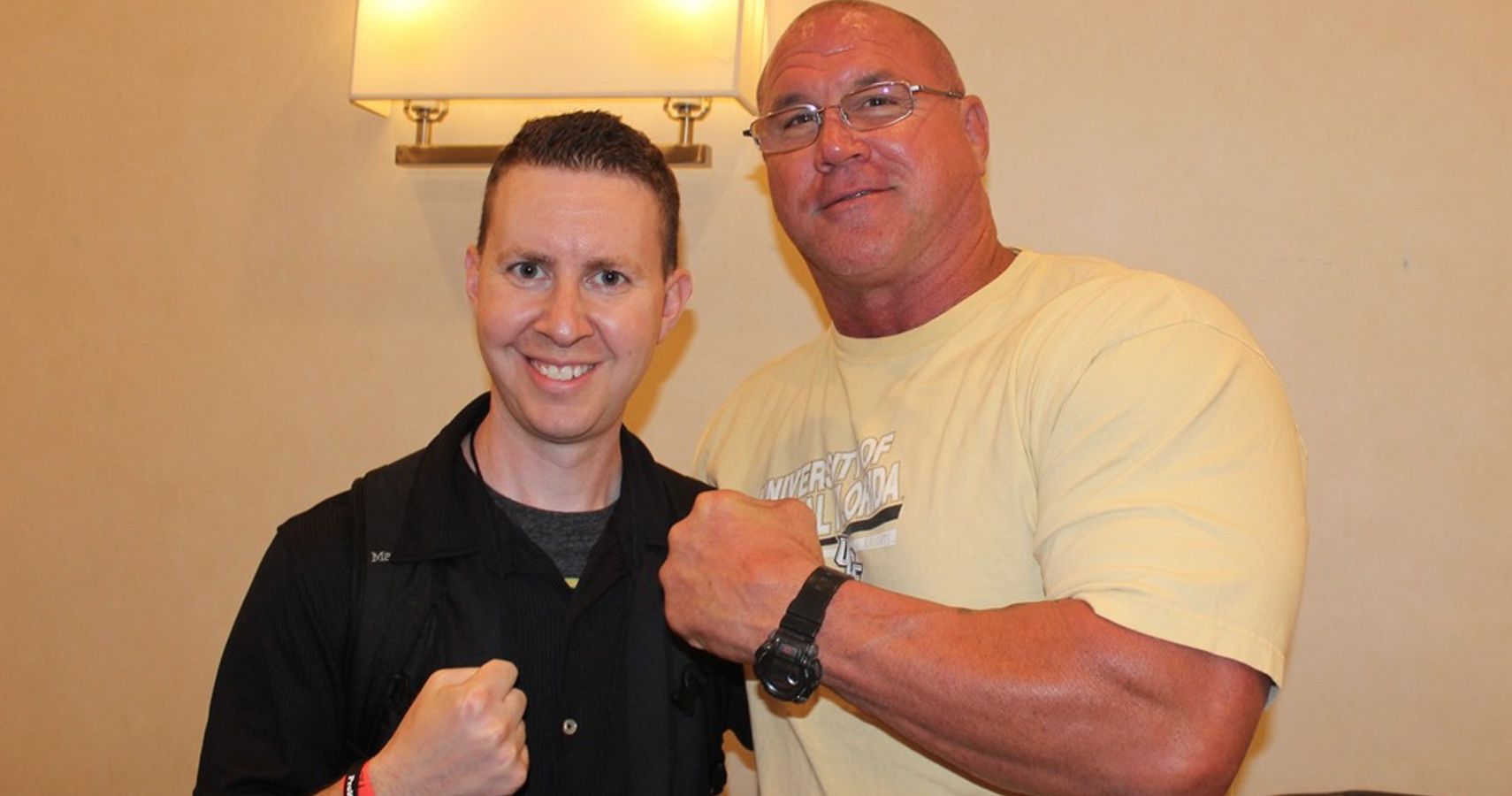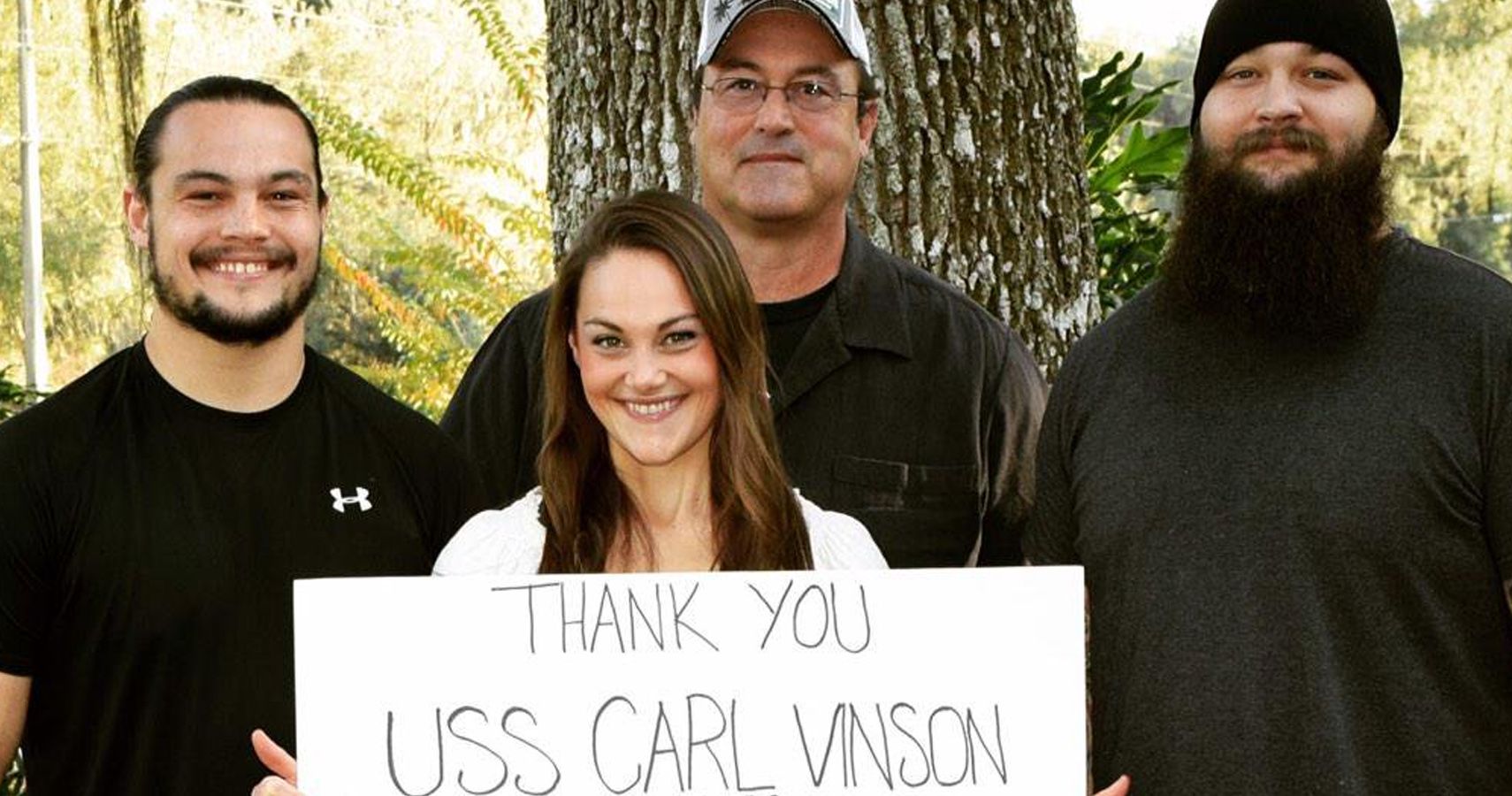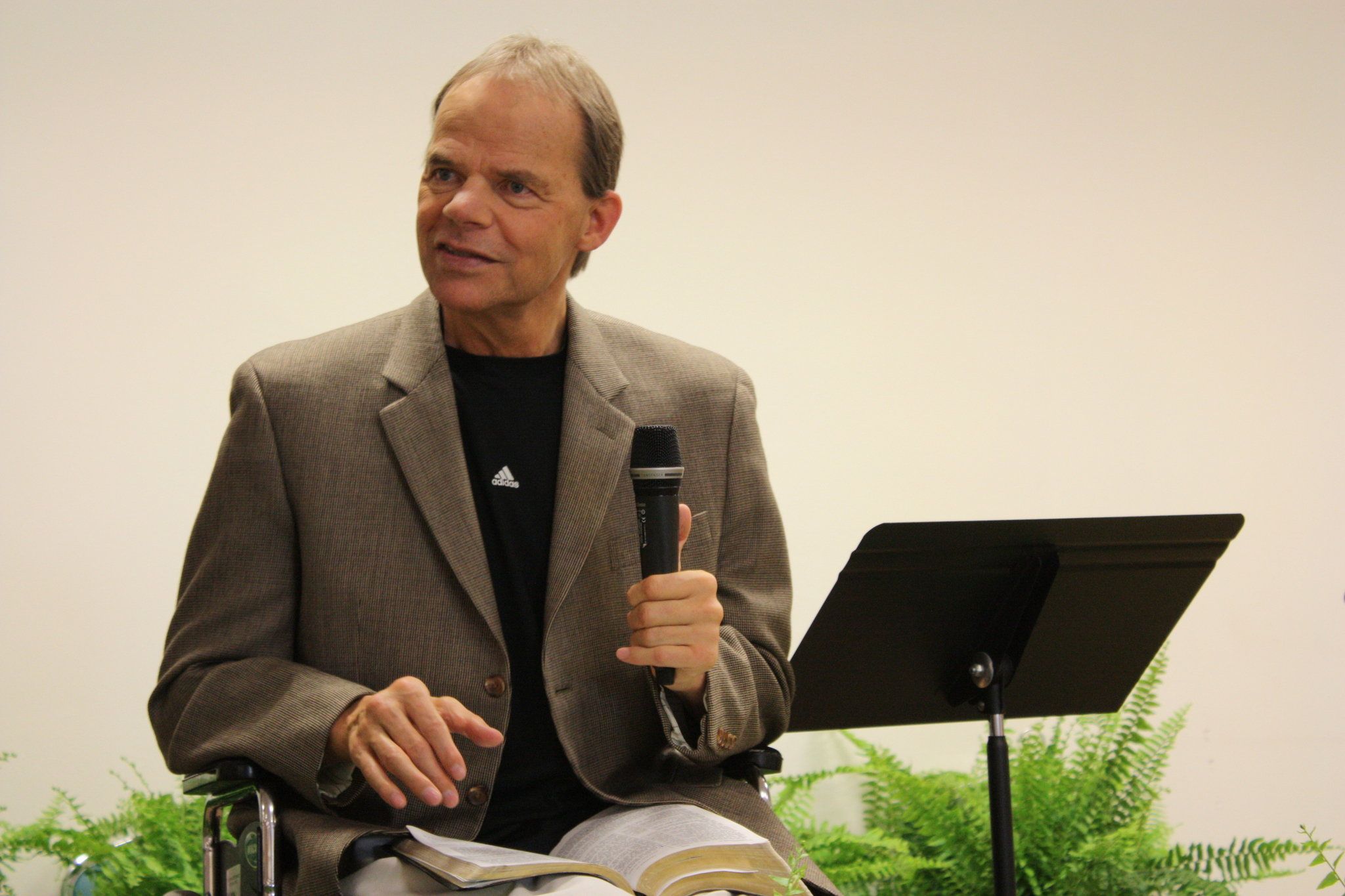Given that some feel it was more of a transitional period between the Golden Age and the Attitude Era within WWE, it’s easy to see why the New Generation Era is not often looked upon with such high regard. It did create future stars in Shawn Michaels, The Undertaker, Steve Austin and Bret Hart, but most of the big names associated with the era didn’t hit their stride until it was over.
This was also a time where Vince McMahon was on the heels of some pretty harsh developments, one being the reveal that WWE’s product was, in fact, scripted, and the other being Hulk Hogan’s agreement to testify that Vince was supplying stars with performance-enhancing drugs.
As a result, the ensuing era in the company’s product wasn’t taken quite as seriously.
This is a crying shame, because there are a number of interesting characters that reared there heads between 1993 and 1997 that aren’t really talked about. Guys like Michaels and The Rock are understandably discussed, but most of the undercard from that period has gone relatively unnoticed, whereas a lot of the same-level characters from WWE’s other eras are still somewhat recalled today.
So, who are we talking about? Who have we forgotten from WWE’s New Generation Era?
16 15. Pierre Ouellette
Carl Ouellet came to WWE in 1993 as the tag-team partner of Jacques Rougeau, previously known as The Mountie. Calling themselves “The Quebecers,” Rougeau and Oullette – who adopted the first name Pierre – dressed as mounties and joined forces with Johnny Polo. They would become WWE Tag Team Champions three times, first defeating the Steiner Brothers, then dropping the titles to and recapturing them from the 1-2-3 Kid and Marty Jannetty, and Men on a Mission.
When Rougeau retired, the two wrestled each other in his final match. Repackaged as Jean-Pierre LaFitte, Ouellet engaged in a lengthy feud with Bret Hart. He was released from the company in 1995, after an alleged run-in with The Kliq prompted him to refuse to put Diesel over cleanly.
Ouellette returned to WWE in 1998 for two years before leaving again.
He made his retirement from professional wrestling in 2011, but returned to independent wrestling in 2016 by defeating Jake Matthews at a Millennium Wrestling Federation event titled “Collision.”
15 14. Mo
Bobby Horne came to WWE with the late Nelson Frazier in 1993, to kick-start what would become a pretty notable tag-team run as Men on a Mission. They were two huge guys, who came in as rapping babyfaces who were bright-colored clothes and put smiles on people’s faces.
Their names were changed to Mo and Mabel respectively, and they got over with the crowd as a result of Mabel’s extraordinary frame. They won the WWE Tag Team Championships from The Quebecers while on tour in the U.K., but lost them two days later.
They turned heel in 1995 by attacking The Smoking Gunns, as well as their own manager Oscar, but once Mabel won the King of the Ring tournament, focus shifted heavily onto him as a singles competitor. It wasn’t long before “Sir” Mo left the company and King Mabel officially went solo.
Though he took a lengthy absence from active wrestling from 2007 to 2014, after about eleven years on the independent wrestling circuit, Sir Mo wrestled several dates in 2015 for Ultimate Championship Wrestling’s “May on a Mission” and “Ricky Steamboat” tours. He also teamed up with Kenny Steele and Orion Taylor to defeat Doberman, John Famous and Randy Wayne at the North American Wrestling Allegiance’s “Wrestling Against Autism” event in October 2016.
14 13. Adam Bomb
Although he would return to WWE during the Monday Night War, Adam Bomb first arrived on the scene during the New Generation Era, debuting in 1993 as Johnny Polo's client. His gimmick was that of a Three Mile Island nuclear meltdown accident survivor, with his name a play on words for ‘atom bomb.’ He’d wrestle on a number of pay-per-views, and even come into contact with the likes of The Undertaker, but never made much impact past being managed by Harvey Wippleman.
He left in August 1995 after taking a severe dip in the card, only appearing on WWE Superstars.
Adam Bomb retired from competition in 2003, but was named part of a class action lawsuit against WWE in July 2016, alongside numerous past wrestlers who claim to have suffered traumatic brain injuries during their time with the company, and that the company covered up the risks.
Bryan Clark has been quite vocal on social media in his rally to spread awareness for health and concussion risks that come with professional wrestlers, and the little rights they receive in return.
13
12 12. Hakushi
Jinsei Shinzaki was brought to WWE from Japan in 1994, to don the Buddhist pilgrim gimmick of Hakushi. He racked up quite a few impressive victories, after a stint of defeating jobbers and mid-card stars like Matt Hardy, Aldo Montoya and The 1-2-3 Kid. He had a brief alliance with Kwang in a tag-team called Shogun, but it didn’t last long before Hakushi turned on his partner.
Perhaps Hakushi’s most memorable moment in WWE came when he locked up with Bret Hart in a rather competitive feud that many said made him look like a star. It didn’t lead anywhere, however, as he took on some shocking losses not long after and lost the buzz they had created together. He left the company in 1996, being written off television after being hit by Bradshaw’s branding iron.
Shinzaki returned to Michinoku Pro Wrestling in 2002 and became president of the company in 2003. He still wrestles with the promotion today. Shinzaki also lent a helping hand to those affected by the 2011 Tōhoku earthquake and tsunami, driving around to provide people with food and drink.
11 11. Samu
Samula Anoa’i came to WWE in 1992 alongside his cousin Solofa Fatu – who we know to be Rikishi. As members of the famed Anoa’i wrestling family, the two had been a tag-team outside of the company, and so were kept together with their team name changed to The Headshrinkers.
They made an impact in causing the Natural Disasters to lose the WEF World Tag Team Championship, but simmered for a while in the division before turning face and defeating The Quebecers to win their first and only tag-team titles in 1994. They would lose the gold two months later to Diesel and Shawn Michaels at an non-televised event, shortly before Samu left to recover from injuries. His role in The Headshrinkers was filled by Sione, otherwise known as The Barbarian.
Samu’s last appearance in WWE was alongside Rosey as they inducted The Wild Samoans into the WWE Hall of Fame in 2007. He was inducted himself into the PWX Circle of Respect in 2014, shortly after teaming with his son Lance Anoa'i in a Six-Man Tag Team match. He made an appearance at the WXWC4 wrestling show in Sunbury, shortly after Rosey’s death in April 2017.
10 10. Dean Douglas
Shane Douglas wrestled with WWE for a year in 1990, but returned to the company in 1995 under a completely new gimmick entitled “Dean Douglas,” a college dean who lectured wrestlers and fans, would issue report cards to diminish wrestlers’ abilities in the ring, and could often be seen taken notes of his opponents at ringside during matches. He feuded with Razor Ramon, even defeating him at In Your House 3 by disqualification. He earned the Intercontinental Championship when Shawn Michaels had to forfeit it, but Ramon would immediately end the reign at eleven minutes long.
In his last appearance on December 4, when he introduced Buddy Landel as his replacement opponent to face Ahmed Johnson at In Your House 5. He left the company to return to ECW shortly thereafter.
Shane Douglas has been wrestling the independent circuit since 2009, recently becoming the Pro Wrestling All-Stars Heavyweight Champion by defeating The Great Akuma on March 24, 2017. He dropped the title to Breyer Wellington in a Fatal Four-Way match on May 12, but would win the XICW Championship from Joe Coleman the very next night. Shane Douglas was also named part of the aforementioned class action lawsuit against WWE, litigated by Konstantine Kyros.
9 9. Curtis Hughes
Curtis Hughes’ first of three brief stints with WWE came right at the cusp of the New Generation Era. He was brought into the company as part of a rivalry between The Undertaker and Harvey Wippleman, as a representative of the latter. During his run, he stole The Undertaker’s urn, but no effort was made to make him a formidable contender as he lost every encounter they had. He also took on Mr. Perfect during this time losing to him via disqualification at the 1993 King of the Ring, and lost to Tatanka in his final televised match before being released the following day.
Up until April 11, 2016, Hughes was the head trainer for World Wrestling Alliance’s Atlanta-based WWA4 Wrestling School. He’s remained an active wrestler, even headlining relatively big events for the company and winning championships, such as the Peachstate Wrestling Alliance Heritage Championship in 2012. He was succeeded as head trainer by AR Fox.
8 8. Duke "The Dumpster" Droese
Michael Droese made his WWE debut in late 1994, with the ring name Duke “The Dumpster” Droese to accentuate his gimmick as a garbage man, who carried a trash can with him to the ring. This gimmick was inspired by the same one he used for himself on the Florida independent circuit prior to signing, as he simply called himself “Garbage Man”. He feuded with the likes of Jerry Lawler and Hunter Hearst Helmsley, even defeating the latter by disqualification at the 1996 Royal Rumble.
Droese left WWE in the summer of that year, after he came to an agreement with Vince McMahon to release his contract as a result of the heavy toll the WWE touring schedule was taking on his body.
Droese retired from professional wrestling in 2001 shortly after a single night WWF return at WrestleMania X-Seven. He’d go on to work as a special ed teacher in McMinnville, Tennessee. Droese was indicted in September 2013 for three counts of delivery of a controlled substance, after selling oxycodone and buprenorphine to an undercover police informant.
7 7. Salvatore Sincere
Salvatore Sincere debuted in WWE in 1996 as a stereotypical Italian heel. His gimmick was to convince everyone that he was sincere and that he loved everyone, when it was clear that he was lying. During his tenure, he got to wrestle some huge names in Shawn Michaels and The Undertaker.
Sincere engaged in a heated rivalry with Marc Mero, in which Mero called him a jobber revealed his real name; Tom Brandi. He would go by this name from there on. He later won a match against Mero via count-out, but left WWE soon after in April 1998, losing to Jeff Jarrett in his last match.
Since then, Brandi has wrestled on the independent circuit both as Tom Brandi and as Salvatore Sincere. He competed for several years for a promotion called National Wrestling Superstars from April 2006, even feuding with Kamala. He used the Salvatore Sincere character with the company. In 2016 and 2017, he has wrestled several times for promotions such as Big Time Wrestling and Superstars of Wrestling Federation, changing gimmicks regularly – even wrestling as The Patriot.
6 6. Aldo Montoya
Those with any knowledge of ECW won’t have any trouble remembering Justin Credible for his accomplishments in the land of extreme, but as a result of the name he made for himself there, it’s easy to forget he played a role in WWE’s New Generation Era as Aldo Montoya.
Donning a mask and embracing his Portuguese ethnicity, Montoya did quite well for himself in his debut year in 1995, in befriending The Kliq and racking up some notable victories over the likes of Jeff Jarrett. His booking was fairly poor from then on, only picking up an upset win over Jerry Lawler in 1996 and not making much impact beyond that. He asked for his release after months of jobbing to the stars, and was sent to ECW as part of their talent exchange with WWE.
Though he officially retired from professional wrestling in 2015, Justin Credible has wrestled a number of times since then. He defeated Matt Tremont at a CZW event in August 2016 and returned to wrestling the following year by teaming up with The Sandman and New Jack at an ECPW show.
5 5. Johnny Polo
Raven’s impact in professional wrestling is by no means forgettable. But before he really started making a name for himself under that moniker, he was briefly known as Johnny Polo in WWE. After signing in 1993, he spent the majority time as an on-screen personality, despite locking up occasionally with the likes of Marty Jannetty, Owen Hart, Virgil and Doink the Clown.
He worked several positions, acting as a color commentator and a co-host of Radio WWF, and even had a role as an associate producer of Monday Night Raw at the time. He left in October 1994, last wrestling Adam Bomb before his final appearance managing Pierre Ouellette.
After his work with TNA, Raven has wrestled for a large number of independent wrestling promotions since 2008, touring the world and wrestling for companies such as Busted Knuckle Pro Wrestling, Juggalo Championship Wrestling, Showtime Allstar Wrestling and Extreme Rising. He is currently hosting his own podcast called ‘The Raven Effect’ on the Jericho Network.
4 4. Tatanka
It seems these days that Tatanka is more known for his one-off appearances and brief returns in WWE – such as the André the Giant Memorial Battle at WrestleMania 32 - than his actual first stint with the company. Tatanka debuted in WWE on Superstars in 1992, as a fan favourite babyface whom carried a great aura about him with his native American theatrics.
He was booked as undefeated for almost two years, until he was pinned by Ludvig Borga after he had hit him with a steel chair. Tatanka engaged in a lengthy rivalry against various members of the Million Dollar Corporation throughout 1994 and 1995, but ultimately left the company on March 19, 1996 after losing his final match to then-WWF Champion Bret Hart.
As mentioned, Tatanka has made several appearances within WWE over the last decade, but has wrestled mainly on the independent circuit. He still wrestles on a limited schedule in 2017, having worked dates for companies such as Freedom Pro Wrestling and British Championship Wrestling. He wrestled for more individual promotions in 2016 than he has in any other year of his career.
3 3. Bart Gunn
People mostly know Bart Gunn, if at all, for either his role in Jim Cornette’s recreation of the Midnight Express or his participation, and subsequent victory, in WWE’s shootfight tournament titled “Brawl For All,” both of which took place in the Attitude Era. But people often forget his involvement in the New Generation Era as part of The Smoking Gunns.
When Bart Gunn came to WWE in 1993, he was placed into a tag-team with his kayfabe brother Billy Gunn, who found success in D-Generation X a number of years later. The tandem won Tag Team Championship gold on three occasions, before breaking up and feuding with each other for a brief period. Bart Gunn found a rivalry in Steve Austin not long after, in a losing effort before being picked up by Cornette and the aforementioned New Midnight Express.
Bart Gunn retired from professional wrestling in 2004, two years before a brief MMA career where he finished with a record of 1-1. Afterwards, he resumed work as an electrician, picking up where he left off pre-WWE. He also started trying his hand at home construction by adding an extension onto his house. He participated in an interview with WWE.com in 2013, where he spoke about his wrestling and MMA careers, as well as life off the road, where he can sleep in his own bed.
2 2. Irwin R. Schyster
Perhaps one of the most old school heels of the New Generation Era, Irwin R. Schyster’s gimmick was dead simple. He portrayed a former IRS tax collector, who constantly badgered fans to pay their taxes, essentially sucking the fun out of any given situation which prompted the fans to boo him to no end. He formed Money Inc. with Ted DiBiase, winning tag team gold three times.
He joined the Million Dollar Corportation in 1994, engaging in a feud with The Undertaker that involved some of his most dastardly heel work – repossessing the headstone of a child, for one. He lost to Savio Vega in his last matches with WWE before leaving in July 1995.
IRS has made plenty of appearances in WWE over the last decade after his in-ring retirement, as he became a producer and road agent for the company in 2006. In this role, he’s had plenty of opportunity to pass on his twenty-plus years of experience, and help younger stars to grow. After all, with his sons being WWE’s Bray Wyatt and Bo Dallas, he’s clearly good at raising a wrestler.
1 1. Lex Luger
Lex Luger came to WWE in 1993 under the heel gimmick “The Narcissist.” He’d garner heat before each match by posing in front of a full-length mirror. He got into a major feud with Mr. Perfect when Bobby Heenan addressed him as “Beyond Perfection.” He would defeat Perfect at WrestleMania IX.
Luger was turned into a babyface in mid-1993 when Hulk Hogan left the company and WWF needed a strong fan-favorite. He feuded with Yokozuna, Ludvig Borga and Tatanka, and co-won the 1994 Royal Rumble match with Bret Hart. After a tag run with Davey Boy Smith, Luger’s contract expired and he left the company shortly after SummerSlam 1995.
In 2011 - five years after Luger declared himself a born again Christian after years of terrors related to drugs, which contributed to the passing of his girlfriend Miss Elizabeth – Luger revealed that he was working with WWE on their wellness policy.
He wanted to ensure that no other wrestlers could fall into the same traps he did in his life.

